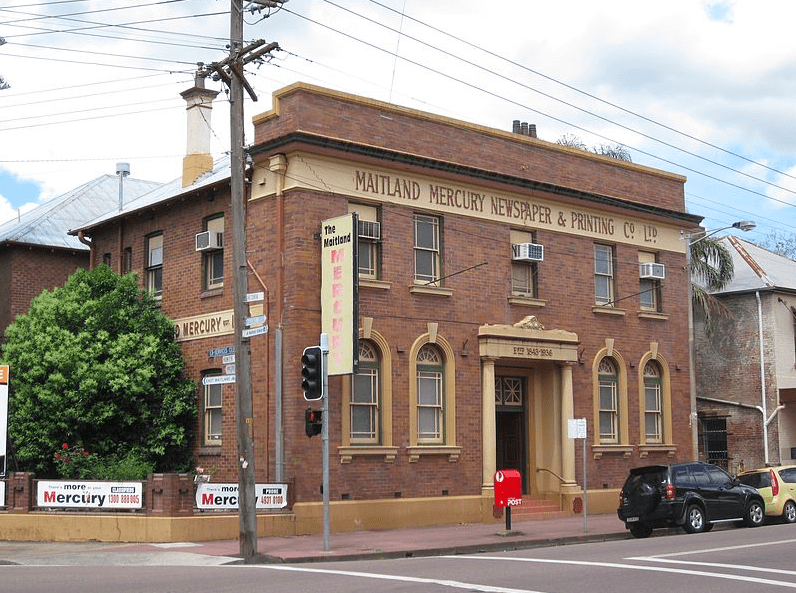It goes without saying that the effects of COVID-19 have wormed their way into every sector of the economy. Amidst a backdrop of major international stock market slumps and looming economic recession, the coronavirus has rattled an already crumbling news industry, prompting fears that this will be the final downfall for local papers across the country.
Since the pandemic, both Australian Community Media and Newscorp have terminated a large amount of community suburban and regional papers, temporarily and for good. Out of 112 papers forced to cease print, 76 of these titles have gone into indefinite recess and the remaining 36 have been made to shut shop altogether.
During a global pandemic where news is literally life or death, we have seen people tune into the 24-hour news cycle rather than wait for a daily or less frequent local print. Even if loyalists wanted to support their local papers, distribution in lockdown has become near impossible, and advertisers have not been interested in a paper that is no longer in print. This is all following the losing battle over the last decade with social media companies for advertisers; one that has seen some of Australia’s most established print media publications, such as Australian Community Media suffer irredeemable 100 million dollar losses. All in all, the effects of the virus feel like the final twist of the knife in a decade long massacre of print community news.
According to the Financial Review, the cease of the print press was forthcoming, with the move from print to digital a transition merely fast-tracked by the pandemic. At News Corp, the transition to digital-only newsrooms had been in the works since 2018 with the initial conversion of 16 print newspapers to cheaper online equivalents. News Corp chairman Michael Miller says the previous and ongoing changeover is in an effort to situate the news to where the audience is, though, the move is not one without casualties.
Digital-only newsrooms have seen large-scale job cuts across the sector, as well as an increase in copy sharing among mutual metropolitan mastheads, that is, repurposing national stories instead of funding local news scoops. If you go online, community news publications all over the country look eerily similar. It’s the same stories plastered on the front of generic-looking website templates alongside questionable pop-up ads, while local news goes underfunded and forgotten.
Between 2011-2017 the Australian Competition and Consumer Commission (ACCC) found Australian newspapers had lost 10,000 of their journalist positions, with most being plucked from rural and regional areas, historically first to go when revenue runs dry. And now, since the abrupt cease of print press due to COVID-19, the Murdoch conglomerate went from having 1250 journalists covering community news to just 375. Moreover, when community publications still include that of local Sydney and other city papers, it is unknown how many journalists are on the payroll to cover the smaller regional communities across Australia.
In the Hunter Valley region of NSW, my local paper the Maitland Mercury has ceased printing. This is a paper that has been around since 1843, making it only two years younger than the Sydney Morning Herald. It is the third oldest regional paper, preceded only by the Geelong Advertiser and the Launceston Examiner. These, alongside dozens of other regional papers across the nation, are news outlets that proudly showcase the voices and stories of regional Australia. And while last weekend’s footy results or reports about local community events might seem insignificant, the prospect of news deserts spawning across the country is one that threatens the health of Australian democracy.
The term ‘news deserts’ was coined to describe the desolate information landscape of communities when left without comprehensive news coverage. The ACCC found that in the last decade, newspaper closures had left 21 local government areas without a single paper or online news source to cover their stories. Of these, 16 were in regional areas.
This is a massive blow to rural and regional Australia. Local newspapers are the beating heart of Australia’s small community towns and play a crucial role in their contribution to democracy. They keep the public informed on what decision-makers are doing and are a vital blockade to corruption, malpractice, and ineptitude of local government and private institutions outside the major cities.
We have seen rural newspapers unearth local, original, and groundbreaking stories. With its own newsroom being slashed to just a third of the journalists in the last seven-years, the Newcastle Herald uncovered one of the biggest scandals of child sexual abuse in the Catholic diocese of Newcastle-Maitland. The same paper also investigated the medical traumas of local women that propelled a Senate inquiry into pelvic mesh devices in 2017 and looked into links between cancer and chemical leakages in Newcastle’s neighbouring Williamtown Royal Australian Airforce base. It is these reports that set the agenda for local television bulletins, not the other way around. And this is not isolated to Newcastle, bold investigative stories have come out of all the crevices and cracks of rural and regional Australia, equally worthy of being told and funded. The loss of this kind of journalism and community platform needs to be at the forefront of the projected losses when we talk about newspapers being defunded or terminated altogether.
Without local papers, we threaten a total wipe-out of regional Australia’s voices and stories. While Sydneysiders can bank on seeing themselves covered in national or state publications, so many local stories will simply be forgotten. And although Australian Community Media and News Corp assert that most of these closures are temporary, by the looks of things after the pandemic passes, so too will the circulation and production of local newspapers. I worry that once we lose our community papers, we will lose the voices of regional Australia.





